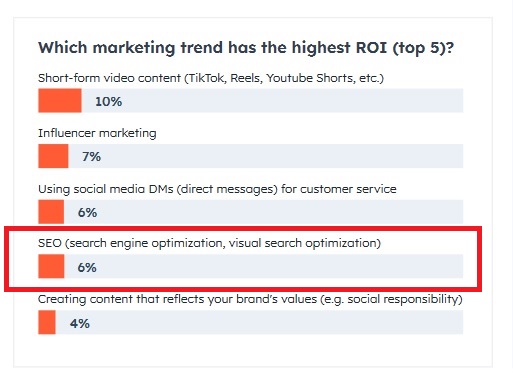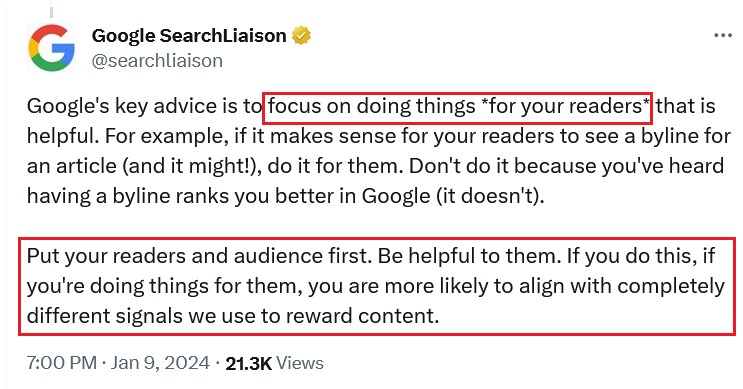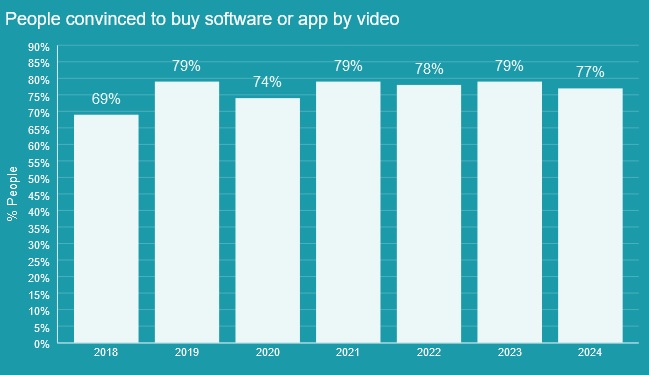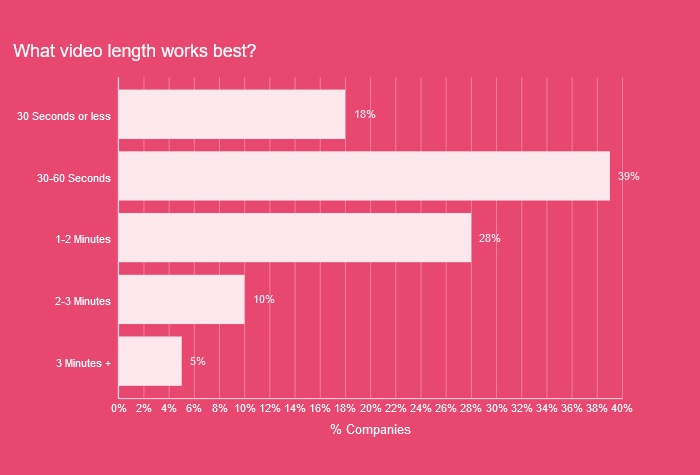To boost your SaaS business’s online presence and drive organic traffic, focus on these key SEO strategies:
- Content Funnel: Create valuable content for each stage of the buyer’s journey.
- Trust Building: Demonstrate expertise through informative content and guest posts.
- User experience: Ensure fast, mobile-friendly browsing for better rankings.
- Video Content: Use videos to engage users and drive conversions.
- Data-driven optimization: Analyze SEO metrics regularly to adapt your strategy.
SaaS SEO Strategy for Startups: The Ultimate Guide for Small Businesses
Fierce competition and constantly evolving search engine algorithms are just the beginning of the challenges that SaaS businesses face at the outset.
But achieving visibility and driving organic traffic isn’t impossible. You only need to get more strategic with your approach.
Implementing a well-rounded SEO strategy can help you establish a strong online presence and achieve sustainable growth.
In this piece, we’ll explore 5 actionable and beginner-friendly tips you can implement to optimize your SaaS website.
But some basics first…
What are SaaS SEO Strategies?
An SEO strategy is a plan to increase your SaaS website’s visibility in search results for terms related to your products.
A key point: An effective SEO strategy aims to get your SaaS website to appear on the first page of search engine results (SERPs) because these are the results that really count.
An analysis done by Backlinko on Google search results revealed that:
- The first organic result receives 27.6% of all clicks.
- The first organic SERP result is ten times more likely to get a click than a web page in the tenth position.
- There is a sharp drop in the click-through rates of results on the second page of SERPs.
How are SEO Strategies for a SaaS Different?
We’re not saying that Google’s ranking factors don’t apply to SaaS websites. They do. This means you’ll still need to:
- Incorporate relevant keywords.
- Drive high-quality backlinks to your website.
- Meet search intent.
- Make your site mobile-friendly.
- Optimize your site’s loading speed.
For SaaS businesses, however, it’s crucial to attract the right audience and build trust from the start more than any other type of business.
This builds a solid foundation for guiding website visitors through the sales funnel. It also helps keep them engaged post-subscription, ultimately reducing churn.
So, what does this kind of SEO strategy look like?
- A content-heavy approach targeting all sales funnel stages, focusing on acquisition and retention.
- Establishing the site as the industry’s go-to source for educational content to claim authority leadership in the niche.
- Building trust and credibility.
Why is an SEO Strategy Important for a SaaS Business?
There are three critical reasons why an SEO strategy should be a top priority for you as a SaaS startup owner.
1. An SEO Marketing Strategy Carries Longevity
SEO, once established, continues to attract organic traffic to your SaaS website in the long term.
Paid ads, on the other hand, can put your website at the top of search results instantly. However, once the ads stop running or your budget runs out, the visibility ends and the traffic stops.
2. It Builds Potential Buyers’ Trust in Your Brand
Being at the top of SERPs can significantly impact your target market’s perceptions of your SaaS business.
Users tend to have more confidence in websites that appear at the top of search engines.
They associate these top-ranking pages with expertise and trustworthiness, assuming that they are more likely to provide reliable information or services.
3. It’s Less Strenuous on Your Budget
SEO is one of the top 5 marketing channels with the highest ROI, according to the 2023 State of Marketing Report by HubSpot.

Image via HubSpot
Unlike paid advertising, where you pay for each click or impression, SEO efforts can continue to drive organic traffic to your website over time without additional costs for each visitor.
That’s why the same HubSpot report shows marketers would still use SEO even when cutting budgets during tough economic times.
5 Effective SEO Strategies for a SaaS Startup
Search engines use numerous ranking factors to decide which websites appear at the top of their search results.
What’s more, new factors are constantly emerging, making it challenging for SaaS business owners to stay updated.
But this tweet from Google Search Liason simplifies the ranking factors into one key factor: Providing an exceptional experience to your readers.
It increases your likelihood of meeting Google’s ranking criteria.

Image via X
With this in mind, this is what we recommend for an effective SaaS SEO strategy.
1. Have a Solid Content Marketing Funnel
Consumers don’t wake up one day and decide they want to buy a particular SaaS product. They go through a journey that involves three stages:
- Awareness: The buyer realizes they have a problem or a need.
- Consideration: The buyer has clearly defined their problem and is actively researching potential solutions.
- Decision: The buyer has now narrowed down their options and is ready to make a purchase decision.
A great SaaS SEO strategy involves creating content that meets the search intent for the stage the buyer is in.
This ensures that the content creates value for them.
Let’s see the kind of content you can publish.
1. Awareness
Consumers in this stage might not be aware of specific products or solutions yet.
They are looking for educational content to help them understand their problem better and explore potential solutions.
Examples:
- Blog posts that address common challenges or pain points your target audience faces.
- In-depth resources like whitepapers and e-books.
- Infographics that simplify complex topics or ideas.
2. Consideration
Readers in this stage are looking for content that helps them understand how different solutions can address their needs.
Examples:
- Product comparisons where you compare your SaaS solution with competitors or alternative solutions in the market.
- Case studies that highlight how your SaaS solution has helped similar businesses or clients solve their problems.
- Videos and product tours that demonstrate how your SaaS product works and showcase its key features and benefits.
3. Decision
Potential customers have narrowed down their options and are ready to make a purchase decision.
At this stage, they are looking for content that helps them finalize their decision and feel confident about choosing your SaaS solution.
Examples:
- Product feature spotlights where you highlight specific features of your SaaS product in individual blog posts. Be sure to include customer reviews and testimonials in your content.
- Use case scenarios that illustrate how your SaaS product can be used in different real-world situations.
- Detailed implementation guides for your SaaS products.
Pro tip: Use a keyword research tool like Semrush to find relevant keywords to use. But don’t stuff the keywords. Use them naturally and in context.
2. Build Trust and Authority
It’s not enough to merely produce content. You need to show users that you are an expert in your niche.
When users perceive you as an expert in a certain area, they are more likely to:
- Visit your website for answers related to your area of expertise.
- Trust the product or service you’re offering.
- Share your content.
- Spend more time on your website.
This higher user engagement acts as a signal to search engines that your website can be trusted, leading to higher rankings.
Additionally, once you establish yourself as an expert, other websites are more likely to link to your content or cite your website as a source. These backlinks improve your search rankings.
Now, how can you achieve this authoritativeness:
- Create content that’s informative and well-researched. Provide valuable and unique insights and not just a rehash of what is already on the internet.
- Contribute guest posts to reputable websites and blogs in your niche.
- Engage in industry-specific forums and online communities where you can share your knowledge and insights.
- Obtain certifications or credentials relevant to your niche.
- Gather data related to your niche and share your insights. Original research or data analysis positions you as a thought leader.
- Stay updated on the latest trends, technologies, and best practices, and share this on your website.
3. Provide an Optimal Experience to Your Website Visitors
An optimal experience isn’t just about the value of the kind of content you publish. It refers to the overall experience a user has when interacting with your website.
Back in 2021, Google introduced Core Web Vitals as a part of its page experience update. The Core Web Vitals are user-centered metrics that assess the user experience provided by a web page.
These metrics include:
- Largest Contentful Paint (LCP): Checks the site’s loading performance.
- First Input Delay (FID): Quantifies the experience users feel when trying to interact with the page for the first time.
- Cumulative Layout Shift (CLS): Checks the site’s visual stability and quantifies the degree of unexpected layout shift in visible page content.
Meeting these metrics is easy if you apply these tactics:
- Use a content delivery network (CDN) to deliver content faster to users around the world.
- Optimize and compress images to reduce their file size without compromising quality.
- Review and audit the third-party scripts you’re using to ensure they are necessary and optimized.
- Ensure your website is mobile-friendly and responsive across various devices.
- Implement lazy loading for images and videos.
- Reserve space for dynamically loaded content to prevent layout shifts.
- Define the dimensions of media elements (images, videos) in the HTML to prevent them from changing size and causing layout shifts.
4. Use Video Content
Consumers are craving more video content from brands — a whooping 89% — according to a 2024 Wyzol report.
And the best part is that video will not only drive traffic to your SaaS website but boost conversions as well. According to the same report, 77% of consumers were convinced to buy or download an app after watching a video about it.

Image via Wyzol
So, start getting serious about publishing high-quality videos on your website, such as:
- Testimonial videos
- Explainers
- Product demos
- Customer onboarding videos
The Wyzol report suggests that videos lasting 30-60 seconds typically yield the best results.

Image via Wyzol
Note that this is just a guide on what has worked for other businesses, let your data lead you.
If your analytics show longer videos are driving the most engagement from your target market, capitalize on that.
Pro tip: Publish the videos on platforms like YouTube or Vimeo and embed them on your site. It offloads the burden of hosting and streaming the videos from your own server, reducing the impact on your website's performance.
5. Leverage Data to Optimize Your SaaS SEO Strategy
Analyzing key metrics related to your SEO performance can provide data-driven insights into:
- Strategies that are working well.
- Areas to focus your optimization efforts for maximum impact.
Additionally, by continuously monitoring and analyzing your SEO performance data, you can adapt your strategy over time to stay ahead of algorithm updates and changes in search behavior.
Here’s how you can implement this strategy.
Step 1: Identify the SEO metrics that match your SEO goals. This can include:
- Keyword rankings
- Organic traffic
- User engagement
- Organic click-through rates
- Organic conversion rates
- Revenue from organic sources
Step 2: Invest in analytics tools like Google Analytics, Google Search Console, or other SEO platforms to track and monitor your chosen metrics.
Step 3: Establish a regular reporting schedule to review your SEO metrics. This can be weekly, monthly, or quarterly, depending on your needs and the pace of your SEO efforts.
Step 4: Keep an eye on trends and changes in your SEO metrics over time. Look for patterns or anomalies that can help you understand what’s working and what needs improvement.
Step 5: Compare your SEO metrics with those of your competitors to gain insights into your relative performance. Identify areas where you can outperform them.
Step 6: Implement changes to your SEO strategy based on the insights you gather from your metrics. Test different approaches and adjust based on the results to continuously improve your SEO efforts.
Step 7: Stay updated on industry best practices, algorithm updates, and changes in search engine guidelines to ensure that your SaaS SEO strategy remains effective and compliant.
Maximize Your Online Presence With These SaaS SEO Strategies
Implementing these SEO strategies will boost your SaaS website’s visibility and drive organic traffic, setting a strong foundation for sustainable growth and success.
Here’s a quick recap:
- Get deep and wide with your content marketing.
- Establish your name as the go-to source for solutions and answers in your niche.
- Ensure that your website provides visitors with an exceptional user experience.
- Don’t shy away from creating video content.
- Measure the success of your strategies and refine them based on data-driven insights.
Remember that consistency is what will bring in sustainable results.
Here’s to your SEO success!

Leave a Reply